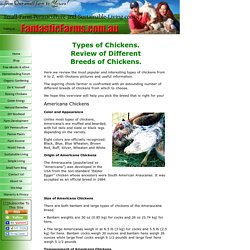

Cut Your Chickens Feed Bill by Fermenting. Fermentation is nothing new to most of us.

We’ve either used it with our surpluses for natural food preservation, or we’ve taken advantage of the probiotics, those beneficial bacteria, that fermenting something creates. As health-promoting element of our diet, its importance is not up for debate; as a part of industrialized lifestyle, its absence has now been recognized as a serious flaw in the system. Luckily, for those just learning this, we can ferment at home right away. Tips_on_Flower_Conditioning. Identifying 50 major plant families. Ingredients: 1 Part Moss 1 Part Sugar 2 Parts Beer (or yogurt or buttermilk) Mix them in blender until it gets a creamy consistency. Coat the stones and pot surfaces with the mixture. Mist the surfaces every now and again to insure that they are moist. Mo. DRIED LAVENDER FLOWERS - Information on Drying, Using and Buying. Dried Lavender is simply the flower buds (calyxes), or stems (bundles) that have been harvested and preserved by drying.

Buy Dried Lavender Flowers Buds 1 Pound Bulk <a target="_blank" href=" Price Lavender Buds</a><img style="text-decoration:none;border:0;padding:0;margin:0;" src=" Lavender Perennials at Wairere Nursery - Buy Online. Lavender blue dilly dilly......

Who doesn't love Lavender? Used since time immemorial as a medicinal herb, an insect repellent, an aromatic oil and a general all round house-hold essential especially when there was a bit of strewing* to be done. The Romans and Greeks used Lavender when bathing and that is the origin of the botanical name Lavandula (la-van-dew-la) which comes from the Latin word lavare meaning to bathe or wash. Lavender's natural home is the Mediterranean region, the Middle East and India. Believe it or not the much loved English Lavender does not come from England at all.
Lavender has a strong biblical connection too; it is mentioned several times under the name 'Spikenard'. There are about 30 species of Lavender. All Lavenders are sun lovers and they prefer to grow in well drained soil. *Lavender was strewed throughout houses during the Great Plague of London (1665) as it was thought to be a protection against disease. Mpanion Planting with Herbs.
Plant Anise and Coriander seeds together.

They will both germinate more quickly. Keep the soil moist and separate them when the seedlings have grown a little. Basil repels the white fly and makes a good companion to tomatoes, both in the garden and in the kitchen. You need three basil plants to every tomato plant for it to be effective. Basil also helps to repel flies and mosquitoes so a pot or basket is handy in the kitchen and outdoors near the barbeque. Planted in the strawberry patch, it will increase the crop. The long roots help to break down heavy soils so it can be planted near shallow-rooted plants. Encourages other plants to increase their essential oils which makes them taste and smell more strongly. Chervil improves the flavour of carrots if grown near them, and radishes planted near will have a hotter taste. Fruit Trees and Homemade Pest Remedies for Organic Gardening. Here we look at fruit trees and homemade pest remedies for common pests and diseases.

Both commercial and home made organic pest control for dealing with fruit tree pests and diseases can be effective if used correctly. Right>> An ecological organic garden where the vegetables sow themselves! Watch the Video here. The best cure is prevention, and the most effective way of preventing pest or disease problems in your fruit trees is to keep them healthy. Here are a few general tips for caring for fruit trees: • Correct any soil mineral imbalances and condition your soil properly with adequate organic matter. • Mulch your trees in spring or autumn (both for young trees) with nutritious materials such as seaweed, wool, straw and pea hay. . • Feed your trees with a layer of compost put down before mulching, plus a scatter of poultry manure or blood and bone over the top of the mulch if they look like they need it. • Don’t cultivate the soil around your fruit trees. Fruit Tree Companion Planting. Types of Chickens. A Review of Different Breeds of Chickens.
Here we review the most popular and interesting types of chickens from A to Z, with chickens pictures and useful information.

The aspiring chook farmer is confronted with an astounding number of different breeds of chickens from which to choose. We hope this overview will help you pick the breed that is right for you! Americana Chickens Color and Appearance Unlike most types of chickens, Americana’s are muffed and bearded, with full tails and slate or black legs depending on the variety. Eight colors are officially recognized: Black, Blue, Blue Wheaten, Brown Red, Buff, Silver, Wheaten and White. Origin of Americana Chickens The Ameraucana (popularized as “Americana”) was developed in the USA from the non-standard “Easter Egger” chicken whose ancestors were South American Araucanas. What Do Chickens Eat?